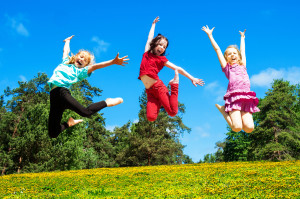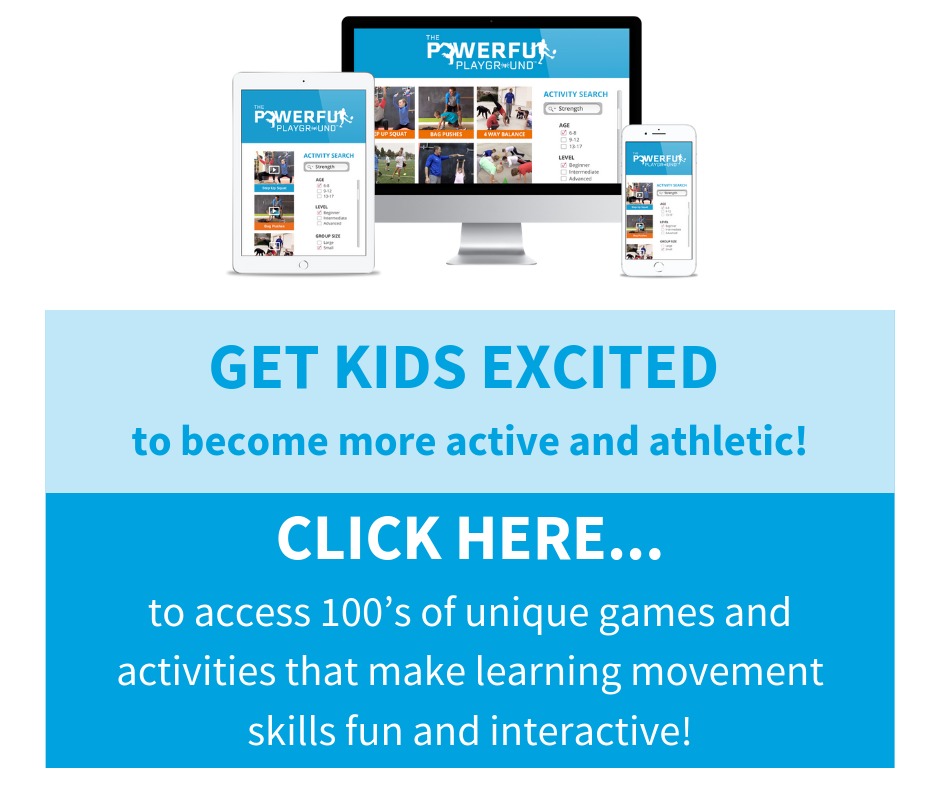By Brett Klika, CSCS
As 8-year-old Billy sprints down the sideline with the soccer ball expertly at his feet, leaving both teammates and opponents in the dust, a truth becomes extremely clear.
With his natural speed, agility, and overall game acumen, Billy has an overwhelming high statistical chance that one day he will rise to the ranks of becoming… an accountant, maybe a doctor, the head of marketing for a solar energy company, or one of thousands of other vocational identities that comprise our country’s adult population.
Hopefully for him and our future health care system, childhood will have rendered him the physical skills and psychological affinity to participate in physical activity for a lifetime.
It’s important that we as parents and fitness mentors remember that our kids do not represent the future of athletics, they represent the future of our nation’s health.
However, our innate need for identity, community, and stratification has driven us to adopt the unrealistic notion that our children are somehow athletic gladiators, with their fates being sealed by game performance, club affiliation, and referees.
Our kids are not athletes. They’re kids.
Don’t get me wrong. Sports shaped my life in powerful ways, and I can’t wait to get my two-year-old daughter involved. When she gets involved, I want her to work hard and strive to win while learning from her losses.
Participating and training for sports provides children valuable focus of their time and energy and can be one of the most amazing tools available to teach the “real world” skills of teamwork, commitment, overcoming adversity, and a list of other essential attributes too lengthy to submit.
In regards to the lifelong impact of sports on a child however, the sports they participate in at a young age are merely different classes in “movement school.” Actually, they are “application” classes for sensory motor and fundamental movement skills they should be developing through large amounts of play and physical education.
Play and PE teach movement words. Sports teach movement sentences and paragraphs.
As we know, the availability of play and PE has become scarce. Participation in sports may be the only formal introduction to physical activity a modern child has access to. This puts the responsibility of overall physical development for many children into the hands of parents, coaches, and fitness professionals.
It is now more important that ever that parents and coaches consider the “long term” when it comes to pre-adolescent participation in athletics. It isn’t about creating a 10–year-old “soccer athlete.” It’s about creating an athletic 10-year-old who can execute the fundamentals of specific sports, but also has the physical skills and interest to participate in a wide variety of other activities.
Working with children and parents now for close to 20 years, I find it hard to control my eye roll when hearing about the importance of a 9-year-old getting on an all-year “competitive” travel team and the delusions of grandeur that will result.
Is this team going to help her beat the odds that 70% of kids drop out of sports at age 13?
Is it going to ensure that they do not become one of the majority of Americans that is inactive from 11-15 hours per day?
Is this “elite” coach going to dedicate his/her approach to doing whatever he/she can do to make sure the child doesn’t one day become one of the near 60% of American adults that are overweight or obese?
When she’s done with competitive sports, will this coach inspire a lifelong affinity for physical activity?
It is an overwhelming statistical likelihood that these are going to be the inevitable challenges the child will need skills to face- not which Division 1 scholarship or professional contract to sign.
If you’re a coach, fitness professional, or any other “movement educator,” it’s important to consider and address these as central goals when working with grade school age children.
- This may mean practicing catching and throwing with young soccer players.
- It may mean teaching a t-ball team to dribble a basketball.
- It may mean teaching a team of basketball players how to kick a ball with both feet.
While all of the above won’t necessarily increase the odds of a win next Saturday, it increases the likelihood that when the child grows up, they will have the wide array of athletic skills needed to be successful in sports and other forms of physical activity.
Unfortunately, we coaches and parents don’t have the advanced education in physical activity that a physical education instructor would have, so this notion of “physical development” seems like a daunting task. Most of the time, we’re just trying to keep our children “active and contained.”
Start by taking a deep breath and remember you’re working with kids, not athletes. When they grow up, they’ll make their living from living, not sports.
We should prepare them accordingly.
Make sure your kids can do at least these 12 things really well:
- Crawl (knees on the ground and off)
- Squat
- Skip (in different directions)
- Run (at different and varying speeds)
- Shuffle
- Hip hinge
- Jump (different distances and heights, horizontally and vertically)
- Get off the ground with no hands
- Push-up plank (holding a push up position with a flat back)
- Throw
- Catch
- Kick
As you know, there are hundreds, if not thousands of more movements a child will need for his or her lifelong physical activity toolbox. Just start by practicing these few in a “sensory rich” environment (responding to sight, sound, touch, pressure, direction, etc.).
Merely by mastering this relative “handful” of physical skills, children create a powerful foundation for lifelong enjoyment and success with physical activity.
It still is important to teach the fundamental skills for different sports and to foster a healthy relationship with competition. Strive to win. Learn from losses.
Additional athletic skills can be integrated into training with warm-ups or circuits using stations for each of the skills mentioned above. Six skills in 6 one- minute stations as a warm-up at the beginning of a practice, six skills in 6 one- minute stations as a conditioning circuit at the end or middle of practice.
CLICK HERE and we’ll send you SPIDERfit’s Ultimate Youth Warm Up Cheat Sheet.
Above all, coaches at all levels of pre-pubescent competition should allow, encourage, and expect participation in a wide variety of sports and other activities throughout the year. For fitness professionals, it’s important to create training sessions around developing all of the skills of athleticism and physical literacy.
Take the skills above and incorporate them into games, drills, and other activities. For parents, encourage your children to be involved in multiple sports and other activities in addition to making sure they have the time and encouragement for unstructured play. As you can see, it doesn’t take a lot of time or developmental expertise to get children going in the right direction.
CLICK HERE and we’ll send you SPIDERfit’s Ultimate Youth Warm Up Cheat Sheet.
What if sports coaches, fitness professionals, and parents formed a central mantra of long-term physical development for our young children creating athletic children for life?
The end result? A new generation of children moving to become a generation of active, healthy adults.
It’s OK to want the best for our children. We want them to win, to succeed, and to feel accomplished. Sports are a powerful vehicle for this. Children with a wide array of athletic skills have lifelong opportunities to be successful with sports and physical activity for life.
They’re not athletes, they’re kids.
Let’s use this vehicle of sports to benefit our children in the long term- where it counts!
Let us know about your experience!
Leave your answers to the questions below in the comments section:
- What age do you feel it’s effective to switch to specialization in one sport?
- Have you ever worked with a child who went on to become a professional athlete? What 3 traits would you say they exemplified that set them apart from others?
- What do you do in your time with children to combine the fundamentals of a sport with lifelong physical literacy skills?
Brett Klika CEO and co-founder of SPIDERfit is an international award- winning certified strength and conditioning coach, author, and motivational speaker with over 20 years experience motivating and inspiring youngsters to a life of health, fitness, and performance.
Brett consults with schools, athletic organizations, fitness professionals, and fortune 500 companies around the world.







Connect with SPIDERfit!